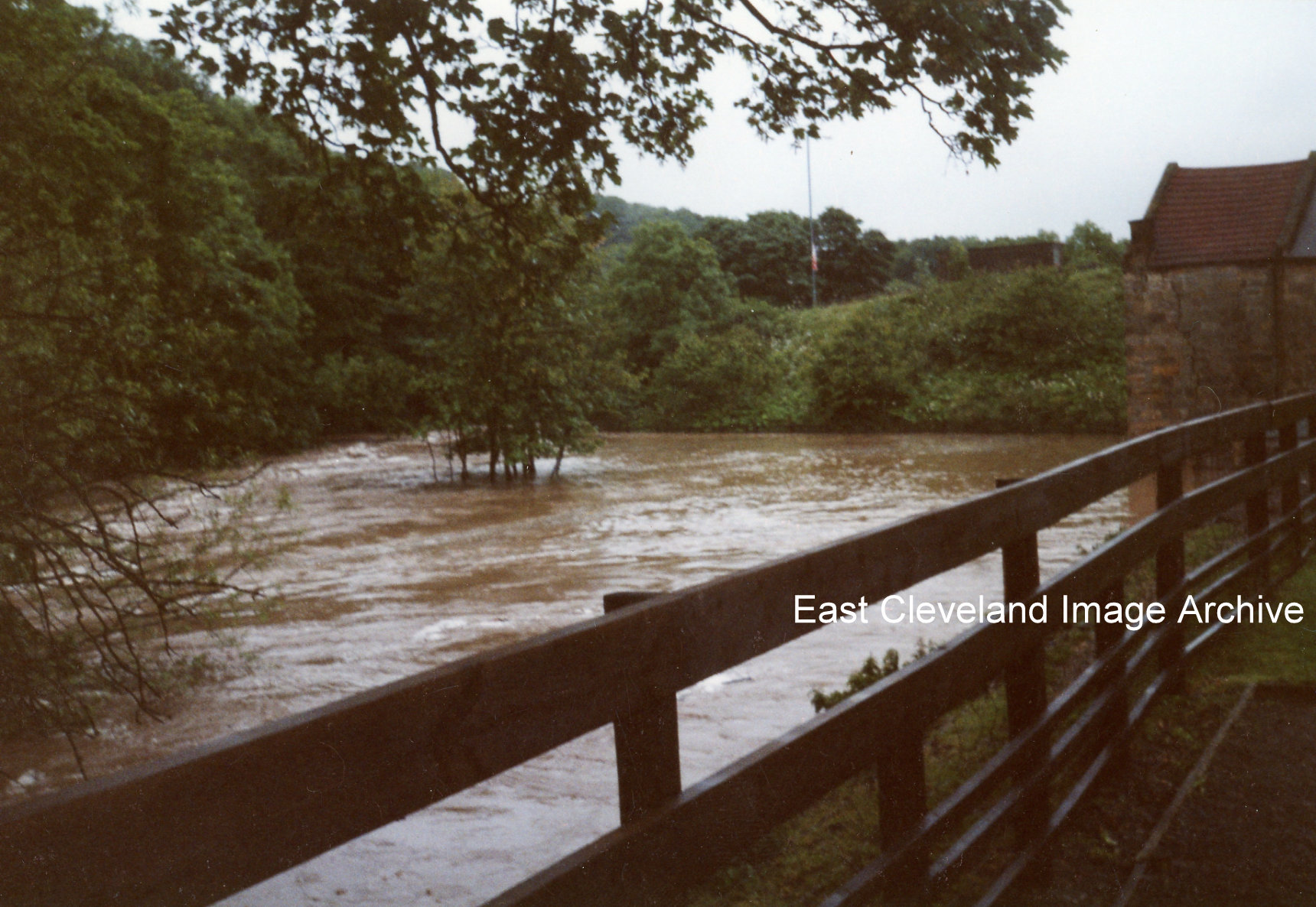
The logs jammed against the old bridge created a dam and the garden of Kilton Mill filled with water.
Image and commentary courtesy of Kathleen Hicks.
|
|
||
 The logs jammed against the old bridge created a dam and the garden of Kilton Mill filled with water. Image and commentary courtesy of Kathleen Hicks. 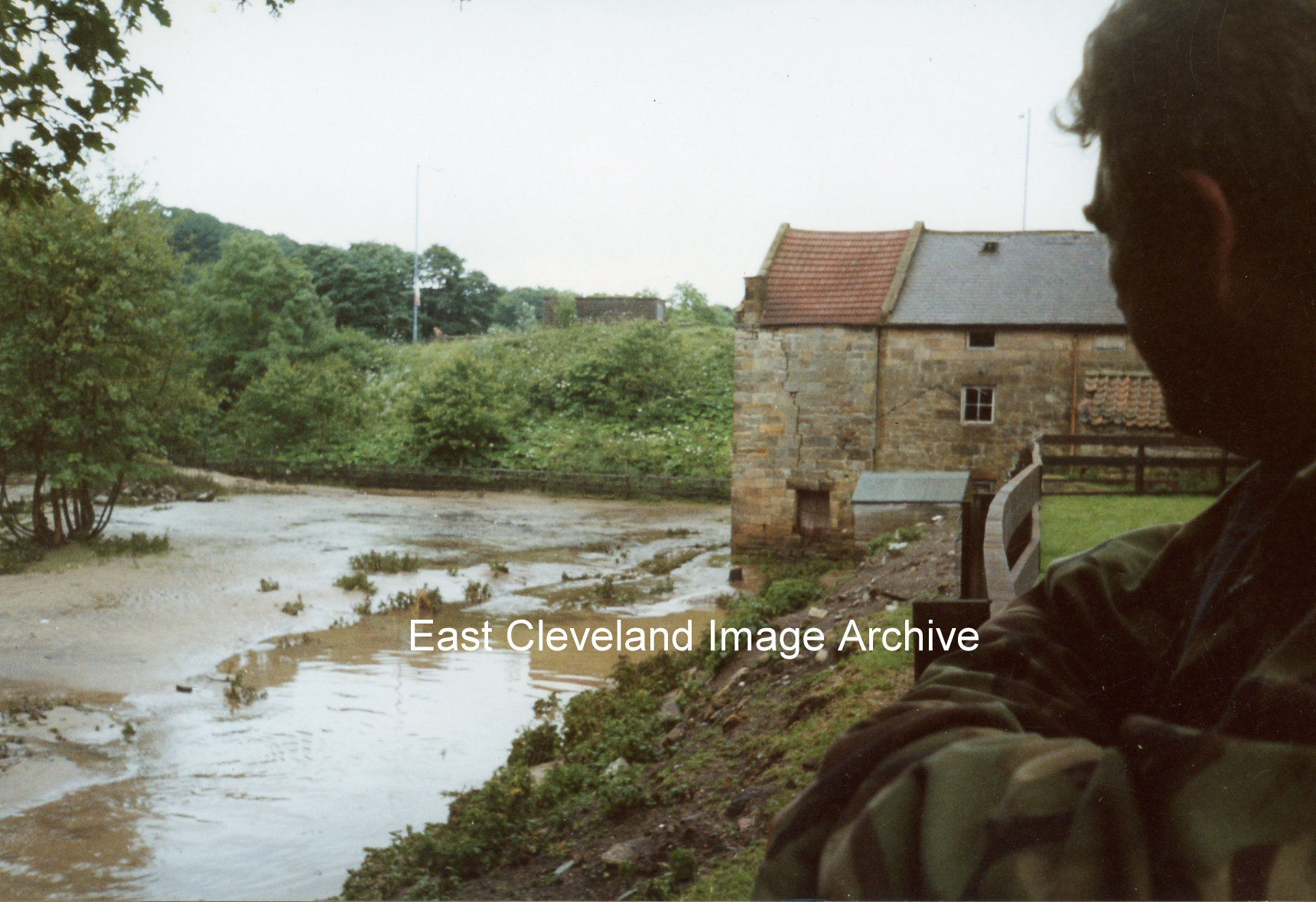 This photograph was taken less than five minutes after the log jam at the bridge gave way. John Hicks views the waterlogged grounds of Kilton Mill. Image courtesy of Kathleen Hicks. 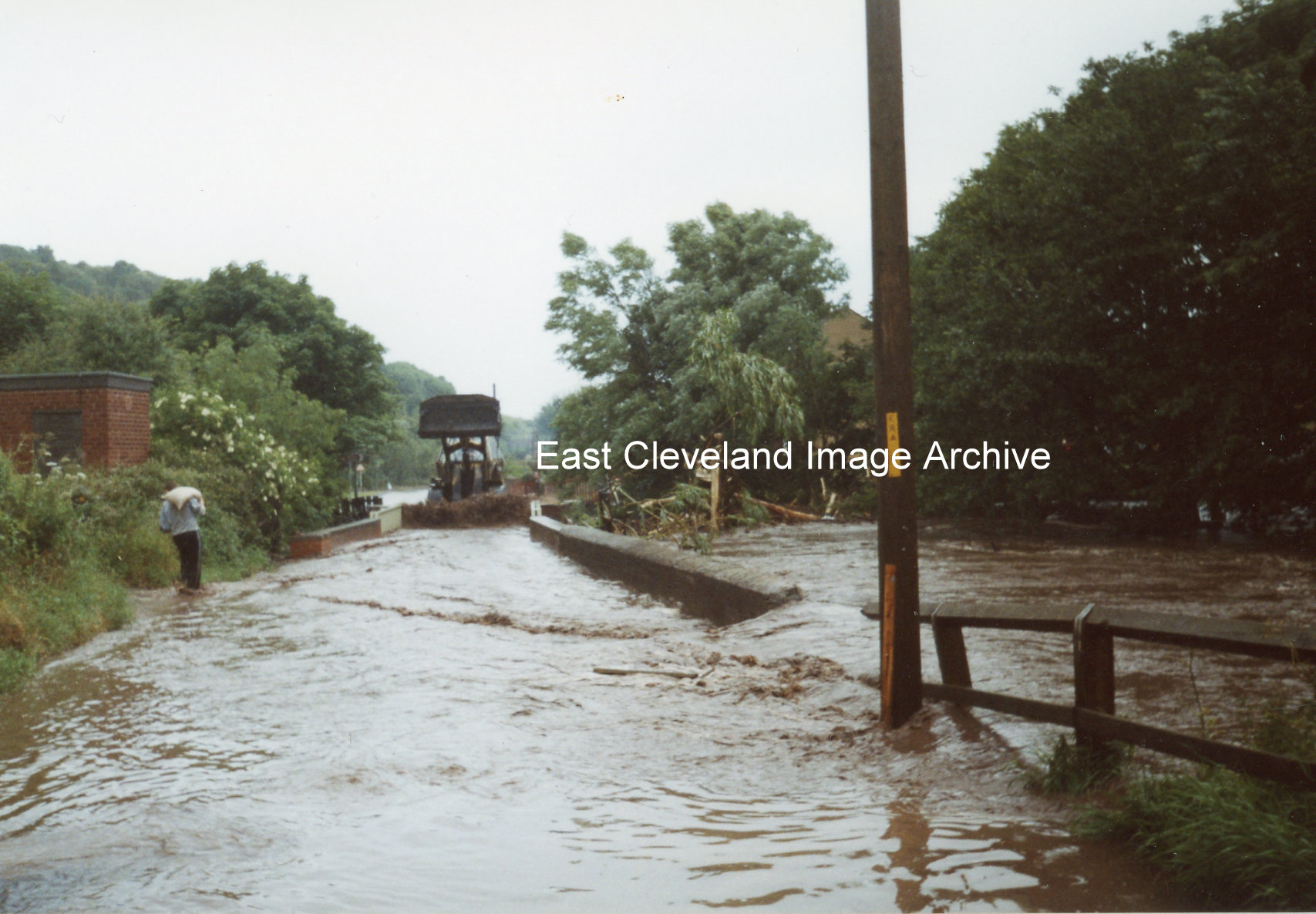 The surge of water flooded over the road. Geoff Robinson used his digger to make a barrier to try and prevent the water from flooding Overman’s Cottages. Then he rescued people in the village from their bedroom windows, in the digger’s bucket. This is the last photograph taken before the water surged, literally in minutes through Skinningrove, leaving devastation in the wake. Image and information courtesy of Kathleen Hicks. 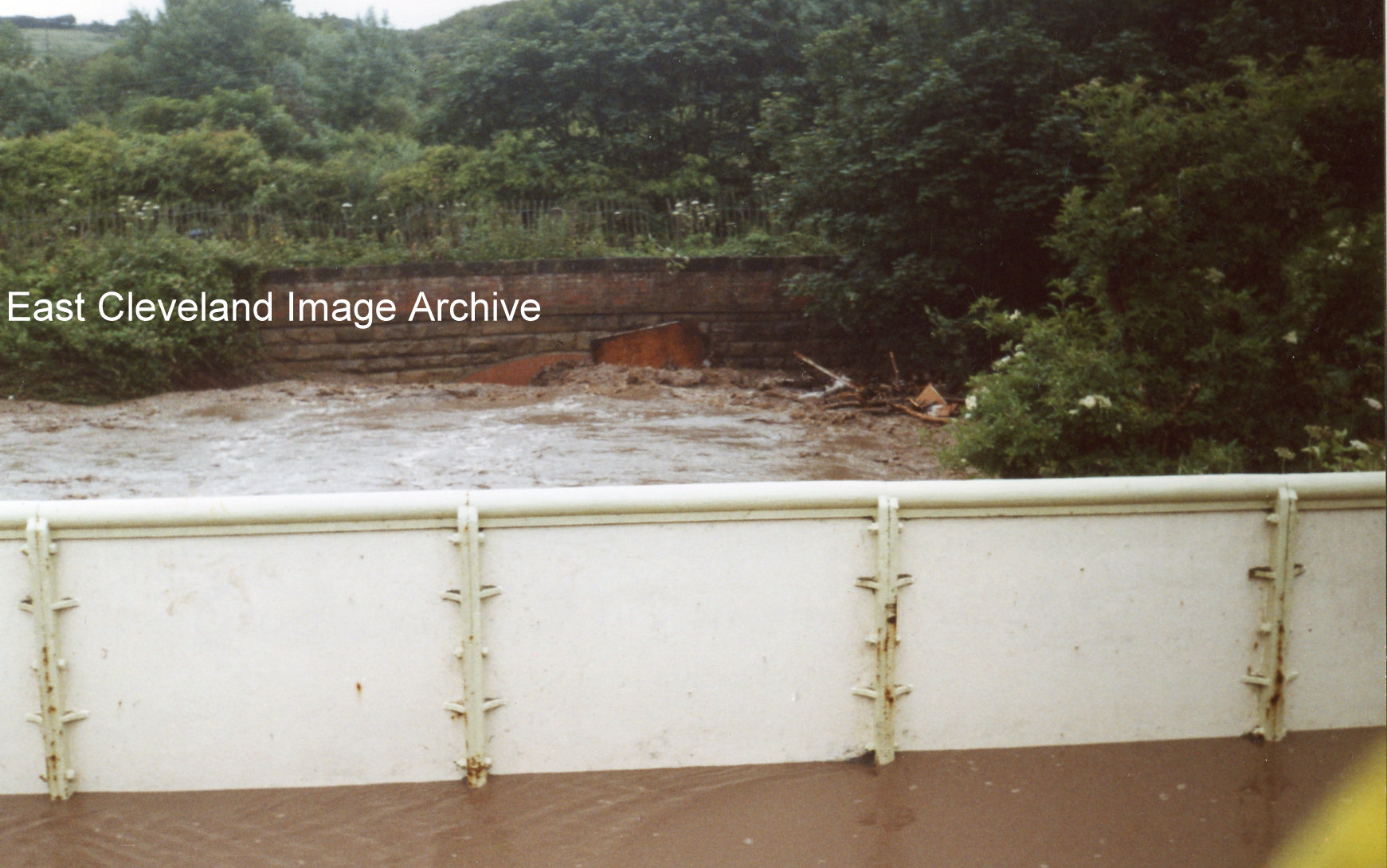 The roof of the shed from Alan Treloar’s garden was jammed against the old bridge. This bridge can be seen from the area of grass near to Kaskane on the Skinningrove Road. Image and detail courtesy of Kathleen Hicks. 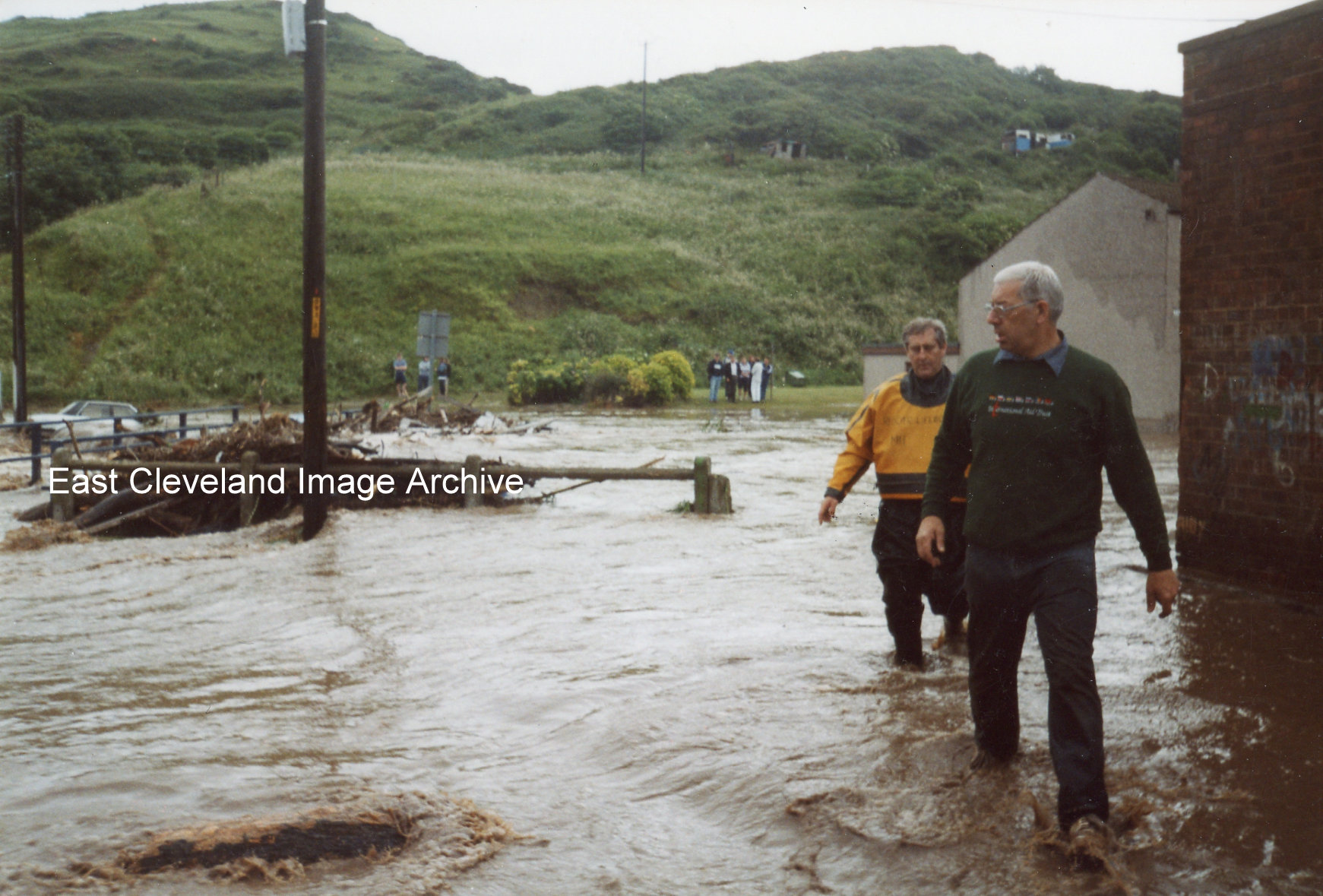 The torrent of water swept down into the village. More tree branches built up against this bridge and the beck burst over its banks. Alan Whitehead (green jumper in right foreground) was among several local residents who sprang to assist the beleaguered resident in Skinningrove. Image and information courtesy of Kathleen Hicks. 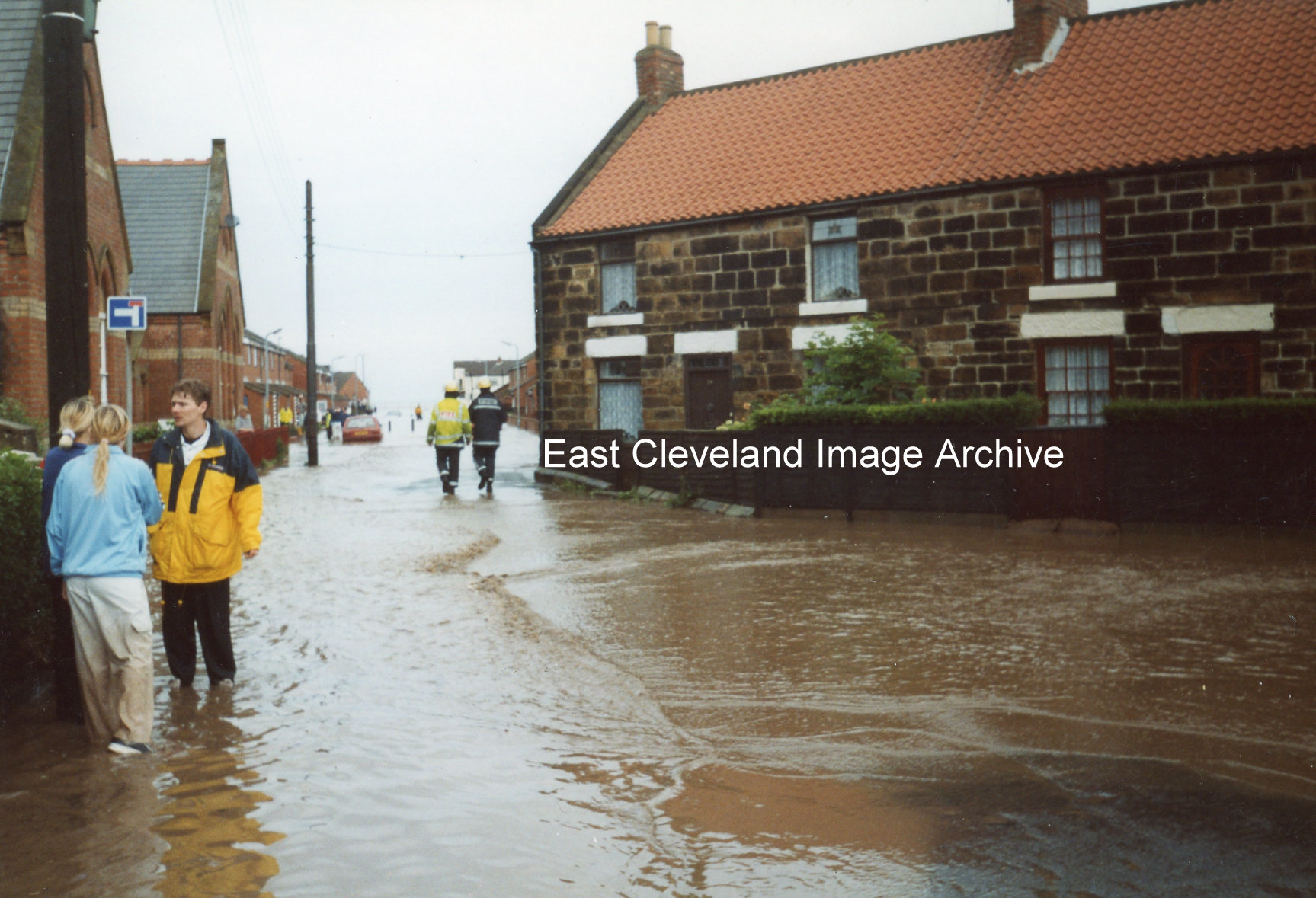 The water flooded through The Square and down the High Street. Image courtesy of Kathleen Hicks. 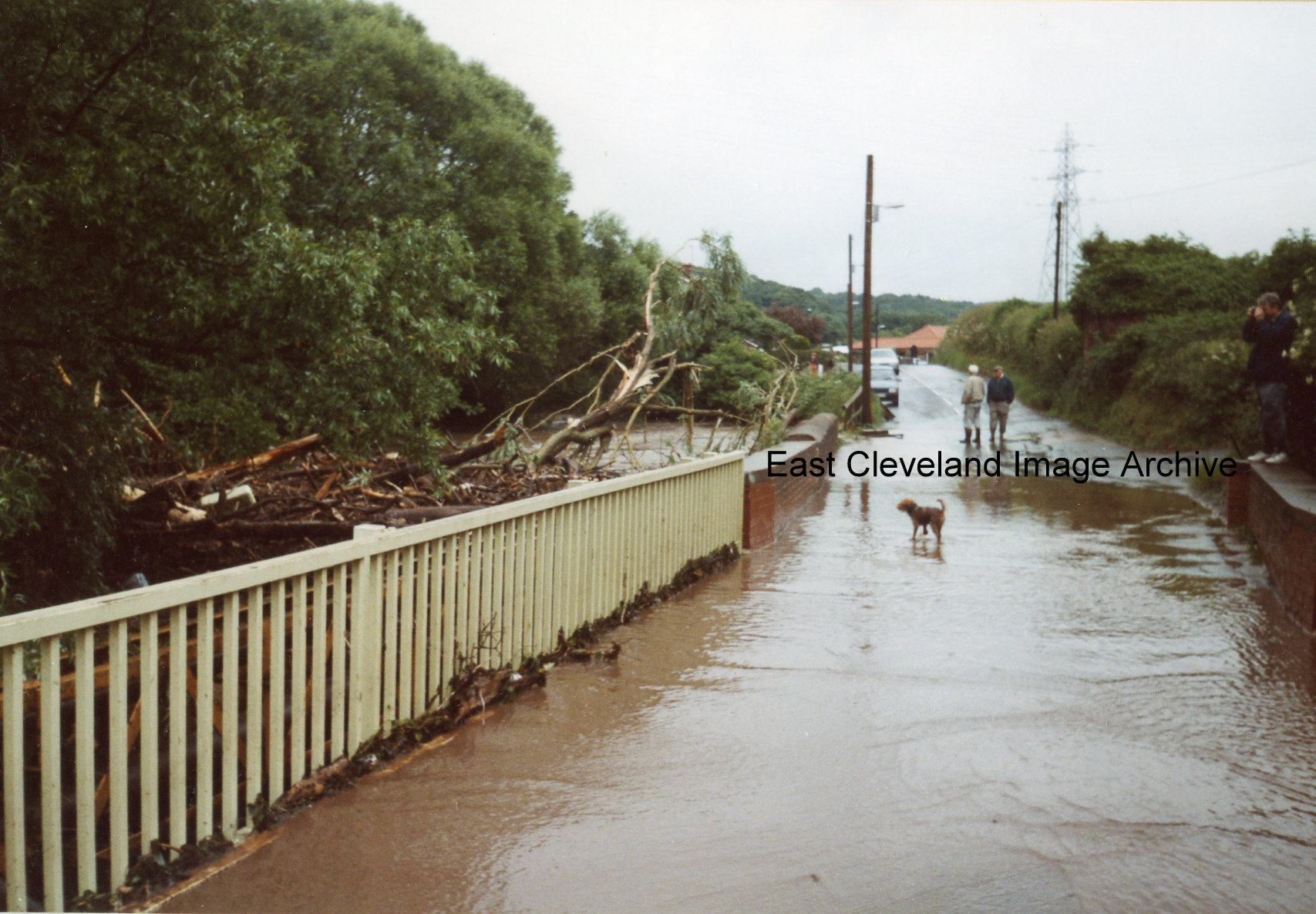 Back along the road towards Kilton Mill, although the surge of water has gone through the beck is still very high and branches are heaped up against the bridge. A final thanks to Kathleen Hicks for submitting this sequence of images. If anybody has any more of the same event please contact us. Image and information courtesy of Kathleen Hicks. 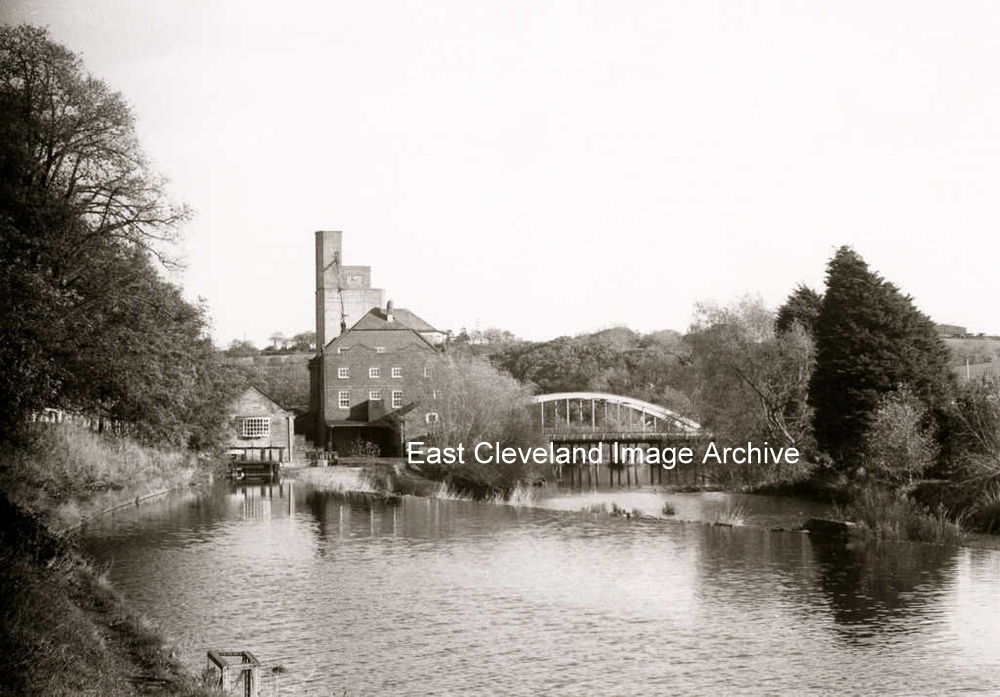 A lovely photograph of Ruswarp Mill on the River Esk; built in 1752 as a corn mill and rebuilt after the fire in 1911. It is no longer a working mill; having then been converted into apartments. The road and railway cross the river over the two bridges below the weir. This image is part of a series taken by Mrs Unthank as part of geography projects for Loftus County Modern School (later Rosecroft School) in the 1960s. Image courtesy of Mrs. R. Unthank. 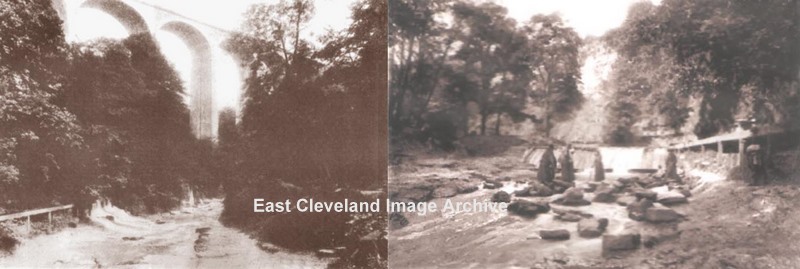 Two for one; Saltburn beck and the Mill Race, two nice but not very often seen photographs. Bill Danby tells us: ”This is a collage that I made myself and is taken from my website Skelton in Cleveland in History to illustrate the mill race to Marske Mill on Skelton Beck.” Bill refers us to his Skelton in Cleveland in History, a website with lots of further interesting images and information. Image courtesy of Bill Danby, thanks to Bill for the update. 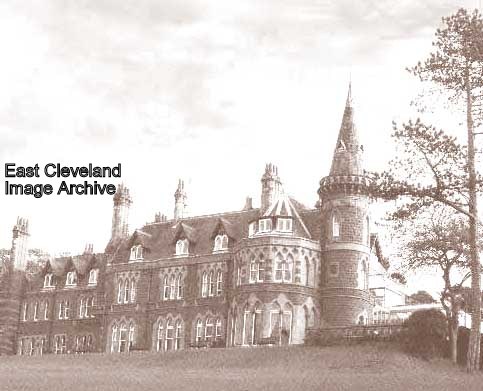 This image features on the website ”Skelton in Cleveland in History”; it was created from a colour photograph taken by Bill Danby as he did not have an old one at the time to illustrate the facts. If you look to the right you can see the modern PVC conservatory. David Richardson adds: “Rushpool Hall was made of ironstone and was built in 1863 to 1865, at a cost of £100,000 by the late John Bell, who with his brother Sir Lothian Bell (the Bell Brothers) was one of the founders of the Cleveland Iron Industry and the first to work ironstone in Skelton.” Rushpool Hall burnt down (although all the walls remained intact) in 1904. There is an image on the site of the burnt out shell, prior to restoration in 1905. George Sheeran comments: “I find it difficult to believe that this house cost £100,000 to build in the 1860s – what is the source of this figure? According to Bank of England calculations that would be about £11,500,000 today. I could just about believe that it cost something like that to build and decorate and fit out and furnish, but even in the 1860s this would take some doing. The Grand Hotel in Scarborough (built at around the same time) with over 300 rooms and an underground railway to bring in supplies cost something like £150,000 to build according to contemporary newspaper accounts. Image and details of its creation courtesy of Bill Danby; thanks to David Richardson and George Sheeran for the updates. |
||
Recent Comments